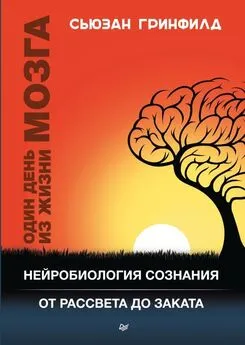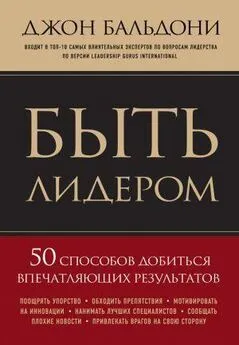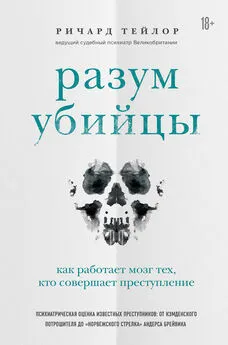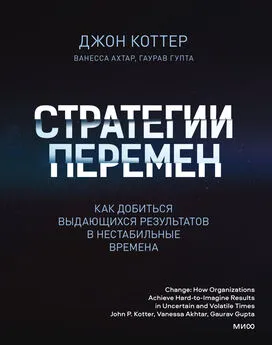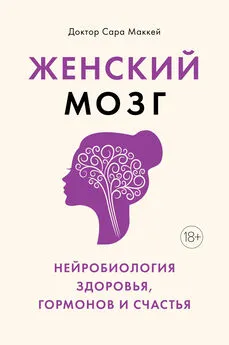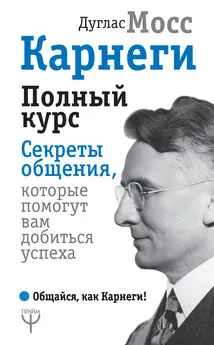Амит Кетвала - Атлетичный мозг [Как нейробиология совершает революцию в спорте и помогает вам добиться высоких результатов]
- Название:Атлетичный мозг [Как нейробиология совершает революцию в спорте и помогает вам добиться высоких результатов]
- Автор:
- Жанр:
- Издательство:Азбука Бизнес, Азбука-Аттикус
- Год:2017
- Город:Москва
- ISBN:978-5-389-13662-5
- Рейтинг:
- Избранное:Добавить в избранное
-
Отзывы:
-
Ваша оценка:
Амит Кетвала - Атлетичный мозг [Как нейробиология совершает революцию в спорте и помогает вам добиться высоких результатов] краткое содержание
В этой книге представлены результаты последних научных открытий, эксклюзивные интервью со спортивными звездами мировой величины, такими как Уэйн Руни и Льюис Хэмилтон, и уникальная возможность узнать, как наставники спортивных команд внедряют новейшие достижения науки в тренировочный процесс. Раскрывая тайны мозга, мы меняем наше будущее.
Атлетичный мозг [Как нейробиология совершает революцию в спорте и помогает вам добиться высоких результатов] - читать онлайн бесплатно полную версию (весь текст целиком)
Интервал:
Закладка:
111
Peters S. The Chimp Paradox.
112
Это один из 19 эпизодов, о которых я писал в серии статей для журнала Sport в преддверии ЧМ-2014. Вся подборка включена в электронную книгу «Истории с чемпионатов мира» (World Cup Stories).
113
Фернандиньо. Duarte F. (2014). Fernandinho: We will have to answer questions about that game for the rest of our lives // Guardian. Дата обращения: 29.11.2015, источник: http://www.theguardian.com/world/2014/dec/14/fernandinho-faces-2014-brazil-answer-questions-game-rest-lives.
114
Beilock S. Choke.
115
Baumeister R. & Steinhilber A. (1984). Paradoxical effects of supportive audiences on performance under pressure: The home field disadvantage in sports championships // Journal of Personality and Social Psychology 47(1). 85–93. http://dx.doi.org/10.1037/0022–3514.47.1.85.
116
Butler J. & Baumeister R. (1998). The trouble with friendly faces: Skilled performance with a supportive audience // Journal of Personality and Social Psychology 75(5). 1213–1230. http://dx.doi.org/10.1037//0022–3514.75.5.1213.
117
Baumeister R. (1984). Choking under pressure: Self-consciousness and paradoxical effects of incentives on skillful performance // Journal of Personality and Social Psychology 46(3). 610–620. http://dx.doi.org/10.1037//0022–3514.46.3.610.
118
Mobbs D., Hassabis D., Seymour B., Marchant J., Weiskopf N., Dolan R. & Frith C. (2009). Choking on the Money: Reward-Based Performance Decrements Are Associated With Midbrain Activity // Psychological Science 20(8). 955–962. http://dx.doi.org/10.1111/j.1467–9280.2009.02399.x.
119
Chib V., De Martino B., Shimojo S. & O’Doherty J. (2012). Neural Mechanisms Underlying Paradoxical Performance for Monetary Incentives Are Driven by Loss Aversion // Neuron 74(3). 582–594. http://dx.doi.org/10.1016/j.neuron.2012.02.038 Lehrer J. (2012). The New Neuroscience of Choking. New Yorker. Дата обращения: 29.11.2015, источник: http://www.newyorker.com/tech/frontal-cortex/the-new-neuroscience-of-choking.
120
Jordet G. (2009). When Superstars Flop: Public Status and Choking Under Pressure in International Soccer Penalty Shootouts // Journal of Applied Sport Psychology 21(2). 125–130. http://dx.doi.org/10.1080/10413200902777263.
121
Гейр Йордет. Arbouw E. (2008). When Superstars Flop. UK-sportivo (38), 24. Источник: http://issuu.com/rftlapoutre/docs/uk38/24.
122
Pijpers J., Oudejans R., Holsheimer F. & Bakker F. (2003). Anxiety — performance relationships in climbing: a process-oriented approach // Psychology of Sport and Exercise 4(3). 283–304. http://dx.doi.org/10.1016/s1469–0292(02)00010–9.
123
Сайен Бейлок. The University of Chicago. (2010). Brain key to ‘choking’ under pressure. Дата обращения: 29.11.2015, источник: http://www.uchicago.edu/features/20101025_choke.
124
Beilock S., Carr T., MacMahon C. & Starkes J. (2002). When paying attention becomes counterproductive: Impact of divided versus skill-focused attention on novice and experienced performance of sensorimotor skills // Journal of Experimental Psychology: Applied 8(1). 6–16. http://dx.doi.org/10.1037//1076–898x.8.1.6.
125
Gray R. (2004). Attending to the Execution of a Complex Sensorimotor Skill: Expertise Differences, Choking, and Slumps // Journal of Experimental Psychology: Applied 10(1). 42–54. http://dx.doi.org/10.1037/1076–898x.10.1.42.
126
Jueptner M., Stephan K. M., Frith C. D., Brooks D. J., Frackowiak R. S. & Passingham R. E. (1997). Anatomy of motor learning. I. Frontal cortex and attention to action // Journal of Neurophysiology 77(3). 1313–1324.
127
SI.com. (1999). The curious case of Jean Van de Velde’s British Open disaster // Sports Illustrated. Дата обращения: 29.11.2015, источник: http://www.si.com/more-sports/2011/09/14/jean-vandevelde.
128
Сайен Бейлок. Dobbs D. (2010). The Tight Collar: The New Science of Choking Under Pressure. WIRED. Дата обращения: 29.11.2015, источник: http://www.wired.com/2010/09/the-tight-collar-the-new-science-of-choking.
129
Специальный формат проведения матча в крикете.
130
Скотт Босуэлл. Bull A. (2013). ‘It took 10 years to recover’: the story of Scott Boswell and the yips // Guardian. Дата обращения: 29.11.2015, источник: http://www.theguardian.com/sport/2013/sep/18/scott-boswell-and-the-yips.
131
Owen D. (2014). The Yips // New Yorker. Дата обращения: 29.11.2015, источник: http://www.newyorker.com/magazine/2014/05/26/the-yips.
132
Стивен Хендри. News.bbc.co.uk. (2010). Hendry reveals 10-year battle with the ‘yips’. Дата обращения: 29.11.2015, источник: http://news.bbc.co.uk/sport1/hi/other_sports/snooker/9267691.stm.
133
Сайен Бейлок. The Choke. (2015). Radio 4. Источник: http://www.bbc.co.uk/programmes/b05v6d35.
134
Beilock S. & Carr T. (2001). On the fragility of skilled performance: What governs choking under pressure? // Journal of Experimental Psychology: General 130(4). 701–725. http://dx.doi.org/10.1037/0096–3445.130.4.701.
135
Beckmann J., Gröpel P. & Ehrlenspiel F. (2013). Preventing motor skill failure through hemisphere-specific priming: Cases from choking under pressure // Journal of Experimental Psychology: General 142(3). 679–691. http://dx.doi.org/10.1037/a0029852.
136
Wulf G., Höss M. & Prinz W. (1998). Instructions for Motor Learning: Differential Effects of Internal Versus External Focus of Attention // Journal of Motor Behavior 30(2). 169–179. http://dx.doi.org/10.1080/00222899809601334.
137
Более подробно процесс тренировки принятия решений описан в: Vickers J. Perception, Cognition, and Decision Training. В настоящее время Дж. Викерс работает над новой редакцией книги.
138
Видео по теме доступны на сайте Д. Койла: http://thetalentcode.com/2014/11/24/the-power-of-high-leverage-practice.
139
Cochran B., McDonald J. & Parault S. (1999). Too Smart for Their Own Good: The Disadvantage of a Superior Processing Capacity for Adult Language Learners // Journal of Memory and Language 41(1). 30–58. http://dx.doi.org/10.1006/jmla.1999.2633.
140
Farrow D. & Abernethy B. (2002). Can anticipatory skills be learned through implicit video based perceptual training? Journal of Sports Sciences 20(6), 471–485. http://dx.doi.org/10.1080/02640410252925143
141
Эпизод с ударом Марка Матерацци в грудь головой возник не на пустом месте. На протяжении всего матча итальянец многократно хватал Зидана за футболку, и, когда Зидан сказал, что подарит ему футболку после финального свистка, Матерацци якобы ответил: «Я бы предпочел твою сестру».
142
Berry S. M. & Wood C. (2004). A Statistician Reads the Sports Pages: The Cold-Foot Effect // Chance 17(4). 47–51.
143
Пеле. Murphy M. & White R. (1995). In the Zone. N. Y.: Penguin/Arkana.
144
Hamilton M. McLaren. L.: Blink
145
Csikszentmihalyi M. (2004). Flow, the secret to happiness. Lecture, TED 2005. Источник: https://www.ted.com/talks/mihaly_csikszentmihalyi_on_flow?language=en.
146
Csikszentmihalyi M. (2002). Flow. L.: Rider.
147
Jackson S. & Csikszentmihalyi M. Flow in Sports.
148
Статистика взята из исследования и онлайн-опросов в рамках проекта Стивена Котлера «Геном потока» (Flow Genome Project). Более подробная информация доступна на сайте проекта: flowgenomeproject.co.
149
Schultheis R. (1984). Bone Games. N. Y.: Random House.
150
17 условий: концентрация внимания, ясные цели, незамедлительная обратная связь, баланс между уровнем способностей и сложностью задачи, значительные последствия, разнообразие участников, глубокое погружение, искренняя увлеченность, общие цели участников, хороший контакт в группе, близкое знакомство, равное участие и сопоставимый уровень квалификации, риск, ощущение контроля, умение слушать, полное взаимопонимание и поддержка, атмосфера творчества.
151
Данный раздел основан на исследовании, проведенном по заказу компании Red Bull. Резюме исследования можно прочитать здесь: http://spectrum.i.org/tech-talk/biomedical/imaging/neuroscience-gets-radical-how-to-study-surfers-brain-waves.
152
Deeny S., Hillman C., Janelle C. & Hatfield B. (2001). EEG coherence and neural efficiency in expert and non-expert marksmen // Medicine & Science in Sports & Exercise 33(5). S 177. http://dx.doi.org/10.1097/00005768–200105001–01008.
153
Babiloni C., Marzano N., Infarinato F., Iacoboni M., Rizza G. & Aschieri P. et al. (2010). Neural efficiency of experts’ brain during judgment of actions: A high-resolution EEG study in elite and amateur karate athletes // Behavioural Brain Research 207(2). 466–475. http://dx.doi.org/10.1016/j.bbr.2009.10.034.
154
Chen J. et al. (August 2005). Effects of anxiety on EEG coherence during dart throw. Paper presented at the meeting of the 2005 World Congress. International Society for Sport Psychology, Sydney, Australia.
Читать дальшеИнтервал:
Закладка:
![Обложка книги Амит Кетвала - Атлетичный мозг [Как нейробиология совершает революцию в спорте и помогает вам добиться высоких результатов]](/books/1101771/amit-ketvala-atletichnyj-mozg-kak-nejrobiologiya-so.webp)
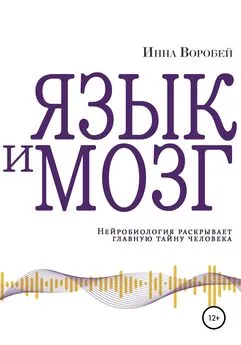
![Дмитрий Филиппов - Вскрытие мозга [Нейробиология психических расстройств]](/books/1067571/dmitrij-filippov-vskrytie-mozga-nejrobiologiya-psi.webp)
